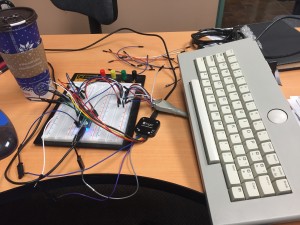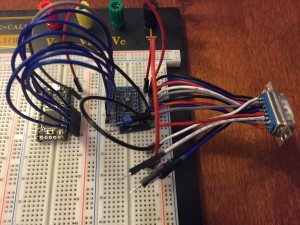 After struggling with various methods of level shifting to convert the TTL 5v logic of the keyboard to the 3.3v logic of the Teensy, I decided to take a step back and wonder exactly why I was struggling with level shifting. Did I really need to use a 3.3v device? Things were so much simpler when everything was 5v logic!
After struggling with various methods of level shifting to convert the TTL 5v logic of the keyboard to the 3.3v logic of the Teensy, I decided to take a step back and wonder exactly why I was struggling with level shifting. Did I really need to use a 3.3v device? Things were so much simpler when everything was 5v logic!
A quick investigation showed that there is an Arduino that is 5v logic and also supports HID – the Arduino Micro. After waiting a few days for my order to show up, I was away to the races with 5v logic. About an hour later, I had the keyboard interfaced to the Arduino Micro, and my logic probe showed that I could scan the matrix and detect key presses.
There’s 6 outputs to scan the keyboard matrix, and 2 inputs – one for Control, Shift, Break, and one for the rest of the keyboard.
Now that the hardware side is locked down, I now need to write a lookup table to convert the POKEY scancodes into HID key presses.

